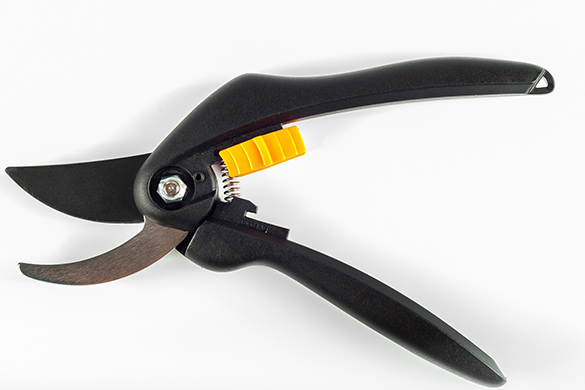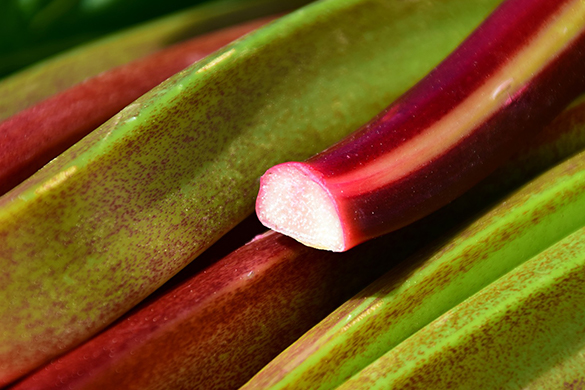Keep your summer garden from being dull, non-productive or dying out. Knowing which veggie produce varieties thrive in summer gardens will help you plant, and keep a stunning summer garden.

homeandgardeningguide.com assembled helpful tips and ideas to assist you in keeping your garden flourishing and producing throughout the summer months.
When Should I Start a Summer Garden?
You can start a summer garden as early as January. The following will give you vital insight into each month and how you can prepare your garden for the coming summer:
January Summer Garden Preparation
While this may seem extraordinarily early, this is the time that new and improved seeds come available to the market. If you do indeed plan on starting your vegetables from seeds, getting them started indoors will provide a head start and potential early harvest for your garden.
The earlier you browse seed catalogs, the better your chances of ordering the seeds you want. Popular or new varieties will tend to sell out early.

Tip: Create a map of your garden and sketch out how you want your garden to look this summer (crops should be rotated each year). Keep these maps from year to year and take detailed notes on your garden’s performance.
If you prefer beginning with seedlings ready to be transplanted, make a list of what you’d like to buy at your nursery when the time comes. Since nursery operators are typically local, ask for recommendations about which vegetables to grow (if needed) and if there have been any infestation or disease warnings issued for your area.
February Summer Garden Preparation
For most vegetables, typical February weather is still considered too early for outdoor planting. However, there are some tasks you can perform indoors and outdoors:
- Finish acquiring your seeds
- Using the instructions on the packets, put them in planting order (by date)
- Buy enough growing mix, seed trays, peat, etc. to get your seeds started
- Start your plants indoors, so they are ready for planting after the threat of frost passes
Take the time to clean, sharpen, or replace your essential garden tools such as:
- Shovels
- Garden Spade and Fork
- Hoe
- Rake
- Bypass Pruner
- Trowel
- Wheelbarrow

Tip: Sanitizing your garden equipment after each use will help you avoid spreading diseases throughout your garden.
February Planting
Outdoors: Only when the ground is reasonably workable you can plant bare-root perennial species like:
- Asparagus
- Artichoke
- Spinach (some varieties)
- Sweet Potato
- Horseradish
- Rhubarb

Tip: If your winter season is particularly cold, wait until temperatures come up a bit or plant them indoors for eventual outdoor replanting.
Indoors: Start seeds for vegetables like broccoli, cabbage, kale, lettuce, and onions (follow the start dates indicated on seed packets).
Read this blog for more ideas, as some fruits and vegetables thrive in containers and indoors.
March Summer Garden Preparation
Weather-wise, March tends to be an unpredictable month. Be prepared to deal with late-season frosts or freezes that could severely damage perennials (cover your crops with row covers when projected temperatures may dip to or below freezing).
March Planting
Most vegetable crops will flourish in slightly acidic soil (6.0 to 6.8 pH). Pick up a pH test kit at your local garden center or send a soil sample to an extension laboratory to make sure your soil pH is in the proper range for the growing season.
You should annually amend your garden soil with compost, peat moss, manure, etc., to improve its structure. Give a healthy start to your perennial vegetables by adding organic compost along the sides of your plant rows. Turn the compost into the existing soil with a spading fork and rake it smooth.

Tip: If your garden soil continuously suffers from erosion, leeching, or other damaging conditions, consider building raised beds in which you can better control soil conditions.
Outdoors: Once soil temperatures are consistently above 40°F, start moving the vegetables you’ve already started like kale, lettuce, spinach to the garden. By the end of the month, your garden should be ready for you to plant peas.
Indoors: Start seeds for crops such as tomatoes, peppers, eggplant, pumpkin, squash, and sweet corn.
April Summer Garden Preparation and Planting
Avoid being lured into a false sense of security. April weather can still throw you a curveball. The row covers you used in March will come in handy during an occasional April nighttime cold snap.

When soil temperatures consistently register at 60ºF or above, you can start safely planting warm-season crops.
Note: If you didn’t start your own seeds, buy sprouts and seedlings of early-season crops like radishes, spinach, onions, leeks, lettuce, cabbage, carrots, beets, peas, and Brussels sprouts.

April Planting
Start planting your early-season crops. Select a mild weathered, overcast day to reduce transplant shock. Water well when planting, and When finished, lay down a two- to three-inch layer of organic mulch to suppress any weeds and regulate soil moisture and temperature.
Tip: For your greens, sow seeds in the garden where they’ll germinate and grow. Try planting them in succession, every 2-3 weeks, for a continuous harvest during the season.
Note: Until your newly transplanted seedlings develop their root systems, keep them watered and moist – if they dry out, you’ll likely lose them.
May Summer Garden Preparation and planting
Now is the time to take advantage of warmer temperatures, longer days, and moist soil to do the majority of your remaining planting. However, resist any temptation to plant more than you can reasonably tend to as the season advances.
May Planting
When soil temperatures remain consistently at or above 70°F, you can start or continue planting your early-season crops, your tomatoes, peppers, melons, eggplants, peppers, corn, cucumbers, potatoes, and herbs.
Tip: Make sure your watering patterns are sufficient to provide your plants with enough water and mulch to remain hydrated through the growing season.
If sowing directly in the garden, start your carrots, beets, and radishes now.

Note: Follow seed packet instructions for proper crop spacing that were direct sown, and thin your seedlings accordingly.
Tip: This is the stage in the growing season to be vigilant for insect damage on leaves. When you spot signs of trouble, take immediate measures to control the situation by removing the affected leaves, using row covers or physical barriers, or spraying with an organic pesticide like neem oil. If you are perplexed by the insect damage, consult your garden center or extension service for recommended actions.
May Harvest
Your early-season plants like asparagus, spring greens, and peas should be approaching harvest time.

Tip: The more you harvest, the more these crops will produce.
Can You Plant a Garden in Summer?
Despite common perception, June or July are not too late to plant garden vegetables and herbs. Vegetables and herbs that yield multiple harvests can be planted in midsummer for a reasonable harvest in the fall. Even though July may be too late for varieties like tomatoes or squash, you can still pick seeds according to your USDA Plant Hardiness Zone that permit later planting and harvesting.
What Can You Plant in a Summer Garden?

Some popular vegetables to grow in summer gardens include:
- Cucumbers
- Tomatoes
- Peppers
- Squash
- Sorrels
- Beans
- Greens
- Berries

And some of the top vegetables to grow in the summer heat include:
- Sweet Potatoes
- Southern Peas
- Hot Peppers
- Green Beans
- Okra
- Sunflowers
Which Flowering Plants Grow in Summer Season?
If you have the space in your garden and want to get some summer color in it, consider the following flowering plants for the summer season:

- Angelonia
- Begonia
- Dahlias
- Daisies
- Daylily
- Geranium
- Gerbera Daisies
- Lavender
- Marigolds
- Dahlias
- Peony
- Salvia
Tip: Growing flowering plants amidst your vegetables will help you keep your garden looking full and vibrant as it thins from summer harvesting activities.
Summer Garden
In this article, you discovered gardening tips and ideas to help you keep your garden producing through the entire growing season.
Knowing what to plant, when to plant it, how to care for it, and when to harvest will help you grow quality edibles through the growing season in its entirety.
Planting without a plan may leave you with an unhealthy garden, low crop yield, or wilted and dying plants.
Sources:
agrilifeextension.tamu.edu/solutions/easy-vegetables-to-grow/
extension.umn.edu/planting-and-growing-guides/planting-vegetables-midsummer-fall-harvest
gardeningsolutions.ifas.ufl.edu/plants/ornamentals/summer-bedding-plants.html
pss.uvm.edu/ppp/articles/sumveg.html
Visit https://www.homeandgardeningguide.com/gardening-landscaping/maintenance/ for more garden maintenance articles, resources, DIY and how-to tips.